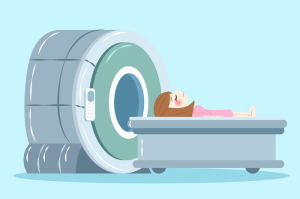by
Lauren Dubinsky, Senior Reporter | February 21, 2018

Detects 98 percent of
malignant breast lesions
As concern mounts over the safety of gadolinium-based contrast agents, a new MR technique is on the horizon that could eliminate the use of it in some cases.
Diffusion kurtosis imaging provides a view of breast tissue on a microstructural level by leveraging diffusion-weighted imaging (DWI) measurements derived from MR.
"Our goal is to obtain better noninvasive insight into the body and to thus provide additional microstructural information about tissues at risk for clinical evaluation by radiologists, along with the standard methods, which will continue to be relevant," Dr. Sebastian Bickelhaupt of the German Cancer Research Center, told HCB News.



Ad Statistics
Times Displayed: 45742
Times Visited: 1370 MIT labs, experts in Multi-Vendor component level repair of: MRI Coils, RF amplifiers, Gradient Amplifiers Contrast Media Injectors. System repairs, sub-assembly repairs, component level repairs, refurbish/calibrate. info@mitlabsusa.com/+1 (305) 470-8013
Bickelhaupt and his colleagues studied a retrospective analysis of data gathered from 222 women at two independent study sites. Since these women had suspicious findings on mammography — BI-RADS 4 and 5 breast lesions —, they underwent DWI followed by breast biopsy.
The team used a software algorithm that characterizes lesions and extracted imaging feature using a kurtosis-based radiomics model. In an independent test set of 127 women, the radiomics model reduced false-positive results by 70 percent and detected 98 percent of malignant lesions.
The researcher team concluded that the model could help reduce unnecessary biopsies in women with BI-RADS 4 lesions. If these results are validated in larger clinical trials, the model would bring other potential advantages to the clinical setting, such as reader-independent assessments.
Bickelhaupt noted that this new approach is not intended to replace contrast-enhanced breast MR protocols in general.
"In this context it is important to communicate that our approach is not designed to replace current contrast-enhanced breast MR protocols in general, but rather to expand diagnostic options to answer specific clinical questions by using focused imaging approaches," he added.
The study titled “Radiomics Based on Adapted Diffusion Kurtosis Imaging Helps to Clarify Most Mammographic Findings Suspicious for Cancer” was recently published in the journal
Radiology.

